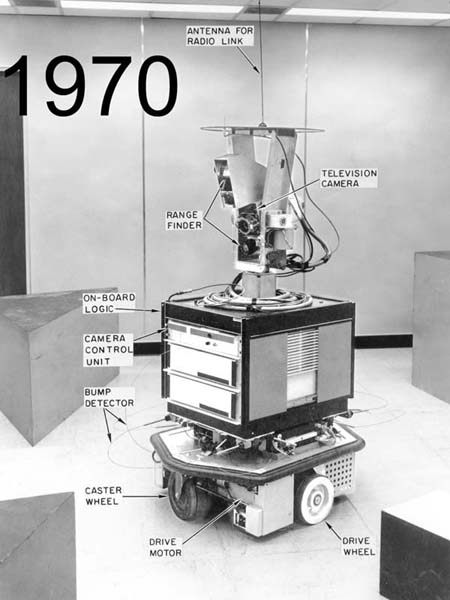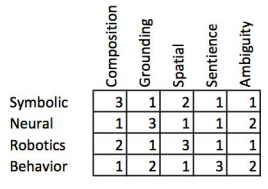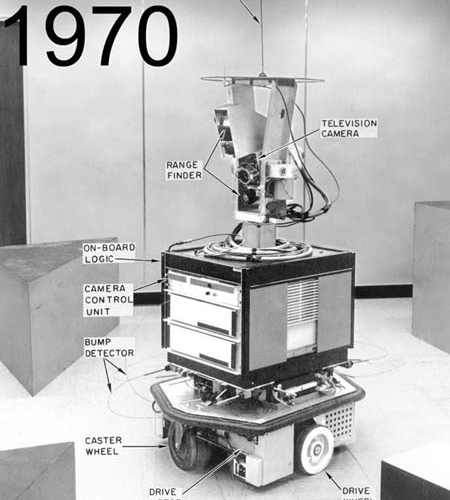“Humans, like dolphins, chimpanzees, and bonobos, may be below a certain threshold of intelligence. Some companies that claim to have artificial intelligence-based systems often use human resources to handle the tricky tasks of their online systems without users knowing it. This may seriously confuse the public’s perception of the current level of artificial intelligence development.
“
God created mankind in his own image.
Humans have created artificial intelligence (AI) in their own image.
At least that was the case at the beginning.
Humans, like dolphins, chimpanzees, and bonobos, may be below a certain threshold of intelligence. Some companies that claim to have artificial intelligence-based systems often use human resources to handle the tricky tasks of their online systems without users knowing it. This may seriously confuse the public’s perception of the current level of artificial intelligence development.
I have been thinking about what research we need to do, what problems we want to solve, and what problems we have solved in order to reach the level of super artificial intelligence or human intelligence. We have tried tirelessly for 62 years, but it is clear that we are not close to achieving all the necessary breakthroughs until now.
Einstein predicted the existence of gravitational waves in 1916, but it was 99 years later, in 2015, that we humans detected gravitational waves for the first time.
The success of some things is a long process. It requires a lot of new technologies, it takes a long time to become more mature, and it also requires many outstanding talents to participate in it. I think artificial intelligence at the level of human intelligence may be like this, and it is more complicated, and it may take hundreds of years to achieve.
There have been at least four main methods of artificial intelligence in the past 62 years. Of course, others may have summarized different methods.
In my opinion, the four main methods and approximate start dates are:
1. Symbols (1956)
2. Neural network (1954, 1960, 1969, 1986, 2006…)
3. Traditional robots (1968)
4. Behavior-based robots (1985)
symbol
Symbols are usually represented by strings, and these characters correspond to a word. Then people set up the relationship between them and encode them, such as the instanceof operator and the is string.
When we entered a query to a search engine, we chose to use symbols to enter the artificial intelligence system’s understanding of the world. The system does some inferences and inferences, and then generates a list of web pages, which infer information that matches the content we are looking for (it does not actually know that we are corresponding to the “person” symbol in its database). Then we will browse the selected information and click on the most matching one or two web pages. If it is not the information we want, we will enter a new symbol or modify the original symbol for a new search.
Neural Networks
On November 17, 2014, the New York Times reported a piece of news, showing a new feature to the world. A Google program automatically generated the title for the following image: “A group of young people playing a game of Frisbee” (A group of young people playing a game of Frisbee).
I think that since then, people really started to pay attention to deep learning. Even for artificial intelligence researchers, especially those of symbol-based artificial intelligence, it is a miracle that a program can do so well. However, I also feel that people confuse performance and ability. If a person has the same level of performance and can accurately describe the picture, then people will naturally expect that person has enough ability to understand the world. He/she may answer each of the following questions:
>>What is the shape of the Frisbee?
>>In general, how far can a person throw?
>>Can people eat frisbee?
>> About how many people can play Frisbee together at one time?
>>Can a three-month-old baby play Frisbee?
>>Is today’s weather suitable for playing frisbee?
But the deep learning neural network that generates the above titles cannot answer these questions.
Traditional robot
In the first few decades of artificial intelligence, at the stage of symbol-based artificial intelligence, researchers tried to realize artificial intelligence by manufacturing robots. Some of these robots can move around and can be used to push things. There are also robotic arms fixed in designated positions. However, it was difficult to manufacture a mobile robot with an articulated arm that had the above two functions at the same time.

Behavior-based robots
Before 1985, I spent 10 years researching computer vision, trying to extract symbolic descriptions of the world from images, and establishing a robot planning system in traditional robotics technology to allow robots to operate in a simulated or real world.
But I was hit.
I began to think about the ability of insects to navigate in the real world and how they can be done with very few neurons (of course less than the number of artificial neurons in modern deep learning networks). When thinking about how they did this, I realized that the evolutionary path of simple organisms may not have started with symbols or three-dimensional modeling systems built for the world. Rather, this evolution started through a very simple connection between perception and action.
In the behavior-based approach caused by this kind of thinking, there are many parallel behaviors running at the same time, trying to understand a small part of perception and relying on them to drive simple behaviors in the world. Usually, actions will give contradictory commands to the robot’s actuators, and measures must be taken to resolve this conflict. However, this does not need to go back to the complete world model, but the conflict resolution mechanism must be heuristic in nature. As people have guessed, evolution will produce this heuristic mechanism.
The following is a comparison of the scores of these four artificial intelligence methods and human children:


As can be seen from the above table, if a human child scores 100 points in each of these 6 abilities, the total score of each of the four artificial intelligence methods is only 8-9 points. As always, I think we may seriously overestimate the capabilities of artificial intelligence systems at this stage.
The Links: 6DI50C-050 SKM100GB12T4


0 Comments for “Rodney Brooks: How do we move towards superintelligence”